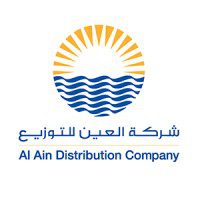Google AdWords is undoubtedly the ultimate tool for businesses looking to increase their online visibility and reach their target audience. Whether you’re a small business owner or a marketing professional, Google AdWords is an essential component of any digital marketing strategy.
Google ads are an essential part of marketing campaigns for businesses. But with so many features and options to choose from, it can be overwhelming to navigate the platform and make the most of your campaigns. That’s why we’ve created this blog – to help you stay up to date with the latest best practices, features, and updates in Google AdWords.
What is Google Ads?
Google Ads (formerly known as Google AdWords) is an online advertising platform developed by Google where businesses can create and display ads to a global audience. Advertisers can create ads in various formats, such as text, image, video, and more, and choose where to display them, such as on Google search results pages, on websites that are part of the Google Display Network, and on YouTube.
Advertisers can also choose to show their ads on specific devices, such as desktop computers or mobile devices, and target specific geographic locations.
Google Ads uses a pay-per-click (PPC) pricing model, which means advertisers only pay when someone clicks on their ad. Advertisers can set a daily or total budget for their campaigns and bid on keywords for which they want their ads to appear.
Google Ads provides detailed reports and analytics, allowing businesses to track their ads’ performance and make data-driven decisions. It also allows businesses to optimize their campaigns with the help of various tools and features, such as ad scheduling, ad rotation, and remarketing.
Google Ads can be a powerful tool for businesses of all sizes and industries, as it allows them to reach a large audience, target specific demographics, and measure the performance of their ads in real-time.
How Do Businesses Use Google Ads?
Businesses use Google Ads in various ways to promote their products or services and reach potential customers. Google Ads provides a wide range of options for businesses to reach potential customers and promote their products or services by targeting the right audience at the right time and with the right format. Some common ways businesses use Google Ads include

Search Advertising: Businesses can create text ads at the top or bottom of Google search result pages when users search for specific keywords. This allows businesses to target users actively searching for products or services related to their business.
Display Advertising: Businesses can create image or video ads on websites that are part of the Google Display Network. This allows businesses to reach a wider audience and target users based on their interests and demographics.
Shopping Advertising: Businesses that sell products online can create ads that feature product images, prices, and other information. These ads can appear on Google SERPs and Google Shopping.
Video Advertising: Businesses can create ads on YouTube and the Google Display Network. This allows them to reach users who are engaging with video content.
Location-based Advertising: Businesses with a physical presence can create ads that target users based on their location. These ads can appear on Google Maps and search results pages when users search for businesses in a specific area.
Remarketing: Businesses can use Google Ads to target users who have previously visited their website or interacted with their ads. By creating targeted ads that are shown to these users, businesses can increase the chances of converting them into customers.
Why Should You Stay Up To Date With Google Ads?
Staying up to date with Google Ads is important for businesses because of its benefits, but without staying updated, you could be left behind. Here are some key reasons why staying up to date with Google Ads is essential.
Algorithm updates: Google regularly updates its advertising algorithm, which can affect the performance of ads. By staying up to date, businesses can adjust their campaigns to align with the latest algorithm updates and ensure their ads continue to perform well.
New features: Google frequently releases new features and updates to its advertising platform. Staying up to date allows businesses to take advantage of these new features and improve the effectiveness of their campaigns.
Competitive advantage: Staying up to date with Google Ads can give a business a competitive advantage over its competitors. By being among the first to use new features and updates, a business can get ahead of its competitors and increase its chances of success.
Cost-effective: Staying up to date with the latest best practices and features can help businesses improve their campaigns’ performance and reach their target audience more effectively. This can lead to better ROI and cost-saving in the long run.
Compliance: Google has strict policies for advertising, and non-compliance can lead to account suspension or termination. Staying up to date with the latest policies and guidelines ensures that a business’s ads are compliant and their account is safe.
Major Changes in Google Ads in 2023

Phasing out of Similar Audiences
Audience targeting is one of the essential features of Google Ads. Similar Audiences is a feature in Google Ads that allows businesses to reach new potential customers who are similar to their current customers. The feature uses machine learning to analyze the behaviour and demographics of a business’s current customers and identify similar users who are likely to be interested in the business’s products or services.
Google is phasing out this Similar audience feature in May 2023. This feature will be removed from all ad groups and campaigns. However, the historical data on any previously used similar segment campaigns can still be accessed. This update allows advertisers to leverage different campaign types to maximise performance.
Performance Max: All-in-One Campaigns
Google’s Performance Max campaign is an automated, all-in-one campaign that combines all of your Google Ads assets for goal-based advertising across all of Google’s networks. This includes YouTube, Display, Search, Shopping, Discover feed, Gmail, and Maps. The campaign eliminates the need to keep text ad assets separate from creative assets and allows Google to pick the best-performing strategy for each campaign, ultimately boosting engagement with your target audience. The PMax campaign will replace Local campaigns and Smart Shopping campaigns. Additionally, Google has provided a self-upgrading tool for current users and will automatically migrate campaigns to PMax in 2023 at an undisclosed date.
New Ad Types for Specific Industries
In response to the challenges faced by various industries due to supply chain issues, pandemic restrictions, and economic turbulence, Google has introduced unique ad formats to help these industries adapt to changing needs.
For example, Google introduced Vehicle Listing Ads to help car dealerships showcase their new and used cars. These ads are featured prominently on the top of the SERP and highlight the car’s image, price, condition, and location. Microsoft Advertising also introduced a similar Automotive Ad format for local dealerships. These ads can be managed similarly to Shopping Ads and require an active inventory feed to be submitted and approved through Google Merchant Center, which previously had strict policies prohibiting most motor vehicles on its platform.
Stopping Smart Shopping Ads and Expanded Texts Ads
Smart shopping ads and expanded text ads have been one of the best ad features by Google. Smart Shopping ads show a combination of product images, prices, and other information and are created using the product data from the business’s merchant center. They are designed to reach a wider audience and drive more sales.
ETAs were introduced in 2016 to replace the standard text ads, allowing for a larger headline, with two 30-character headlines and a single 90-character description. It has now been replaced with response search ads or RSA, which have become the standard for Google Search ads.
Business Names and Logos Get Highlights
Google is making its search results more intuitive by highlighting business names and logos in search results. This design change will make it easier for users to spot a business at a glance. This update will roll out as a beta in the coming weeks and is a step towards enhancing the user experience. Businesses will also benefit by gaining increased visibility and building brand recognition on Google’s search platform. The algorithm will automatically add the business name and logo to the campaign from the landing page, but businesses can review and remove content that doesn’t belong or manually add the details. Note that any updates from the landing page will be visible in the ads unless removed or overridden.
Smart Bidding and Broad Match Update
The latest update from Google Ads combines the power of Smart Bidding campaigns and Broad Match to optimize digital campaigns. Smart Bidding uses machine learning and automation to consider hundreds of signals, leading to increased account growth and potential conversions. Utilizing Broad Match keywords in the “Recommendations” admin tab can also help gather data faster. This combined strategy effectively maximizes account growth and conversions without the need to segment bids by match type. The advanced capabilities of Google Ads’ bidding system allow for individual assessment of queries and adjustments to bids to reach desired performance metrics. This is particularly beneficial for Broad Match keywords as it can uncover additional actions to further growth objectives.
Audio Advertisements for Youtube
Audio ads on YouTube are a form of advertising that allows businesses to reach their target audience through audio-based content. These ads are played during a user’s listening session on YouTube Music, YouTube’s music streaming service. The target of these ads is the YouTube “Music Mood Lineups” and “Podcast Lineups.” This allows advertisers to target their ads more precisely, giving them greater control over who listens to their content. This also maximises the potential of YouTube targeting, making the overall effectiveness of Google ads higher.
New Voiceover Characteristics for Video Ads
Google’s recent update adds to the convenience of advertisers when it comes to video ads. One of the most notable updates is the ability to add a voice-over to existing YouTube video ads without additional editing or post-production.
With this update, advertisers can now access a variety of eight voices (four male, four female) for their voice-overs. Advertisers can now make all necessary edits directly within Google Ads. This new feature is an excellent advantage for businesses looking for greater audience engagement and should not be overlooked.
How to Track Changes In Google Ads And Apply These Updates?
So how can you stay up to date on these changes? Where do you track what happens? Here’s how.
By signing up for notifications, regularly checking the Google Ads Help Center and Blog, attending industry events and conferences, joining online communities, monitoring your campaigns, testing new features, and partnering with an agency or professional, businesses can stay informed about the latest changes and updates to the platform.
This will allow them to take advantage of new features and updates, improve the performance of their campaigns, stay ahead of their competitors, and ensure compliance with advertising policies. By staying up to date, businesses can optimize their campaigns for better results, gain a competitive advantage and achieve better ROI.
Wrapping Up
Google Ads is considered to be one of the most effective online advertising platforms for businesses due to its vast network of websites and apps, targeting capabilities, detailed analytics, and cost-effectiveness. Google Ads is the most popular platform for online advertising, has advertiser-friendly policies, and is integrated with other Google services such as Google Analytics, Google Tag Manager, and Google Optimize. These features make it easier for businesses to reach their target audience, track and analyze data and optimize their campaigns.
If you’re looking for a reliable and professional Google Ads partner to help you stay up-to-date with your campaigns, your search ends here. As a leading Google Ads management company in Dubai, our team at Silwatech can help you navigate the platform, stay informed about updates and changes, and optimize your campaigns for success.
Contact us today to learn more about how they can help you take your business to the next level with Google Ads.




















